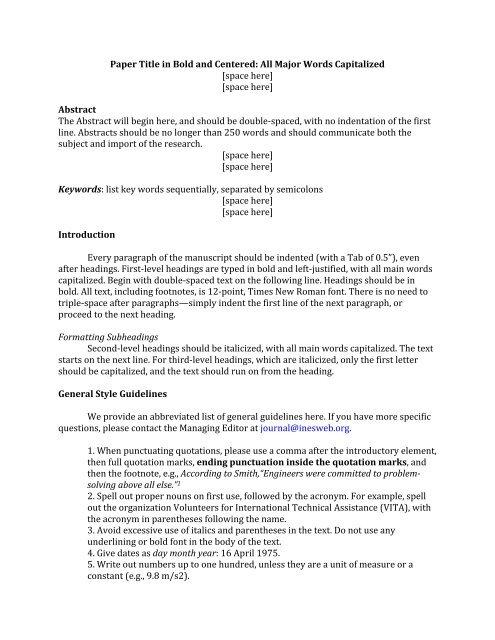Expanding Golf Horizons: The Lasting Impact of John Henry Taylor’s Teaching Legacy
John Henry Taylor’s influence as a golf instructor transcends mere technical guidance; it embodies a transformative philosophy that has reshaped the game. His extensive contributions have left an enduring imprint on golf, inspiring players to pursue excellence. This article explores the depth of Taylor’s teaching legacy, examining how his principles have influenced the evolution of golf and continue to resonate today.
The Core Philosophy of John Henry Taylor: Lessons from a Master
John Henry Taylor, celebrated for his remarkable achievements as a five-time Open Champion, was equally esteemed for his revolutionary teaching methods. His insights into the game provide invaluable lessons for golfers seeking to unlock their full potential.
Taylor emphasized precision and technique in every aspect of golfing. He believed that each swing should be executed with meticulous accuracy to enhance consistency and reduce mistakes. Through carefully designed drills and thorough explanations, he highlighted the significance of grip, stance, and swing path—fundamentals that have helped countless golfers refine their skills.
In addition to technical prowess, Taylor understood the critical role of strategy and mental resilience in golf. He advocated for comprehensive course management knowledge—considering factors like wind conditions and shot selection—to optimize performance. Furthermore, he stressed developing mental strength by maintaining focus under pressure and overcoming challenges with composure. This holistic approach empowered golfers by integrating physical skill with mental acuity.
Building Strong Foundations: The Importance of Grip Techniques
A cornerstone of effective golfing is mastering grip techniques—a principle championed by both Hogan and Taylor. As an influential figure in this area, Taylor developed grip methods that remain relevant today.
His grip technique involved positioning the left hand on the club with its thumb directed downwards while curling fingers around it securely. The right hand rested atop the left with its thumb also on the shaft but interlocking fingers instead. This configuration ensured a stable hold on the club for enhanced control during swings.
Comparison Table: Grip Techniques
| Feature | Hogan | Taylor |
|—|—|—|
| Left Hand Position | Thumb down along shaft | Thumb down along shaft |
| Right Hand Position | Thumb resting on shaft | Thumb resting on shaft |
| Finger Position | Fingers curled around shaft | Fingers interlocked |
Taylor’s grip method offered numerous advantages—it promoted consistent swings by keeping hands positioned identically each time while reducing tension in hands and wrists for improved shot accuracy.
Cultivating Mental Resilience: The Masters Mindset
Recognizing that mental fortitude is crucial in golf performance was central to John Henry Taylor’s teachings. He believed overcoming psychological barriers was just as vital as mastering technical skills.
To foster resilience among golfers, he proposed several guiding principles such as maintaining concentration amidst distractions while controlling emotions positively during challenging moments. Visualization techniques were also encouraged; imagining successful shots could bolster confidence levels while alleviating anxiety—key components necessary for peak performance under pressure.
Taylor’s philosophies resonated deeply within elite circles; renowned golfer Tommy Armour credited much of his success at winning tournaments like the U.S Open in 1927 to insights gained from studying under him—a testament to how these teachings endure through generations.
Executing an Effective Swing: Insights from John Henry Taylor
Establishing Fundamentals: Grip, Stance & Alignment
At its core lies an emphasis on establishing strong fundamentals—grip stability akin to shaking hands with your club ensures control throughout your swing journey! A balanced stance requires feet shoulder-width apart while slightly turning toes outward enhances alignment towards targets effectively!
Power Meets Precision: Backswing & Downswing Dynamics
The backswing should flow smoothly without losing angle integrity across clubface surfaces! Keeping arms compact allows maximum power generation when transitioning into downswing phases where weight shifts onto leading foot drive clubs through impact zones efficiently!
Finishing Strongly: Follow-Through Mechanics
An essential element often overlooked—the follow-through dictates ball trajectory! Maintaining balance post-shot alongside extending arms fully contributes significantly towards achieving desired backspin effects resulting ultimately higher flights coupled increased accuracy upon landing!
Conclusion
The legacy left behind by John Henry Taylor extends far beyond his own time period; it continues influencing aspiring golfers worldwide even today! By exploring this legendary figure’s life alongside teachings we gain deeper insights into complexities surrounding effective instruction methodologies nurturing young talents alike! May his unwavering commitment towards excellence inspire future generations within golfing communities everywhere!

Unlocking the Secrets of Golf: The Enduring Impact of John Henry Taylor’s Teaching Legacy
Meta Title
Unlocking Golf Secrets: John Henry Taylor’s Lasting Teaching Influence
Meta Description
Discover the impact of John Henry Taylor’s teaching legacy on golf techniques and philosophies. Enhance your game with insights from this legendary golfer.
Introduction to John Henry Taylor
John Henry Taylor, often regarded as one of the pioneers of modern golf, played a pivotal role in shaping the game’s fundamentals. As a prolific champion in the early 20th century, his legacy extends beyond his tournament wins, influencing countless golfers and instructors.
The Fundamentals of Taylor’s Teaching
John Henry Taylor’s approach to teaching golf focused on several key components that remain relevant to players today. These include:
1. Grip and Stance
Taylor emphasized the importance of a proper grip and stance as foundational elements for a successful swing. A strong grip allows for greater control, while a stable stance ensures balance throughout the swing.
- Key Points:
– Use a neutral grip for versatility.
- Ensure feet are shoulder-width apart for stability.
2. Swing Mechanics
Taylor’s teachings on swing mechanics revolved around simplicity and efficiency. He advocated for a smooth, rhythmic swing that prioritized timing over brute strength.
- Key Areas to Focus:
– Keep your head still during the swing.
– Maintain a fluid motion to enhance consistency.
3. Course Management
Understanding the course is critical for any golfer. Taylor taught players to assess each hole strategically, emphasizing the importance of selecting appropriate targets and shot types.
- Strategies:
– Identify safe zones on the green.
– Balance risk and reward in shot selection.
The Psychology of Golf: Mental Strength
Mental Preparation
Taylor’s teachings encompassed the psychological aspects of the game. A golfer’s mindset significantly influences performance.
- Key Methods:
– Visualization: Picture the shot before executing.
– Positive self-talk: Reinforce confidence to combat anxiety during play.
Focus and Concentration
Taylor believed in the power of focus. He encouraged golfers to concentrate on their routine and establish consistency, which is crucial during high-pressure situations.
Shot Shaping Techniques
One of Taylor’s notable contributions was his approach to shot shaping. He taught golfers to manipulate ball trajectories, which is essential for navigating tricky course layouts.
Types of Shot Shapes
- Draw: A shot that curves from right to left for right-handed players, often providing more distance.
- Fade: A shot that curves from left to right, useful for avoiding obstacles.
Practical Tips for Mastering Shot Shapes
- Adjust your stance slightly based on the intended direction of the shot.
- Use the specific grooves of the clubface to influence spin and trajectory.
The Legacy of Taylor’s Teaching in Modern Golf
Enduring Influence on Golf Instruction
John Henry Taylor’s philosophies serve as a cornerstone for many modern coaching methods. His focus on fundamentals continues to shape golf instruction today.
- Current Training Programs:
– Many golf academies incorporate Taylor’s teachings into their curriculums, ensuring that his principles endure.
Case Study: The Impact on Famous Golfers
Numerous champions cite Taylor’s influence on their game. Players like Ben Hogan and Bobby Jones implemented his techniques, showcasing their applicability across generations.
Benefits of Applying Taylor’s Techniques
- Improved Consistency: Focusing on fundamentals leads to more reliable performance.
- Enhanced Course Management Skills: Strategic thinking reduces mistakes and optimizes scoring opportunities.
- Increased Confidence: Understanding swing mechanics and psychology bolsters mental fortitude.
Practical Tips for Implementing Taylor’s Techniques
1. Daily Practice Routine
Incorporating Taylor’s principles into your training can enhance proficiency:
- Spend 15-20 minutes each session working on grip and stance.
- Allocate time for shot shaping exercises.
2. Mental Training
Integrate mental practices into your preparation:
- Dedicate 5-10 minutes to visualization before each round.
- Develop a pre-shot routine to foster focus.
3. Seek Instruction
Consider working with a golf instructor who understands Taylor’s methods and can provide personalized oversight.
Conclusion: Honoring the Legacy
By embracing the subtle yet profound impact of John Henry Taylor’s teachings, golfers at all skill levels can unlock their potential. His focus on fundamentals, mental strength, and strategic play continues to resonate with players aiming to refine their game.
HTML Table Example
| Technique | Description | Benefits |
|---|---|---|
| Grip and Stance | Foundation for any swing | Greater control and stability |
| Swing Mechanics | Fluid and rhythmic swings | Consistency in shots |
| Course Management | Strategic play on the course | Optimized scoring opportunities |
Incorporating the cherished teachings of John Henry Taylor into your golf regimen may just be the key to unlocking your full potential on the course!




